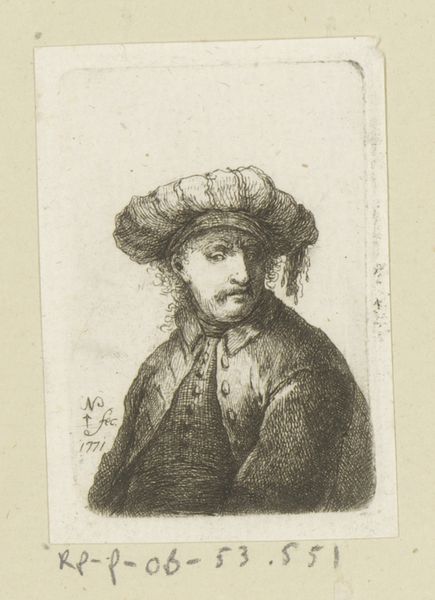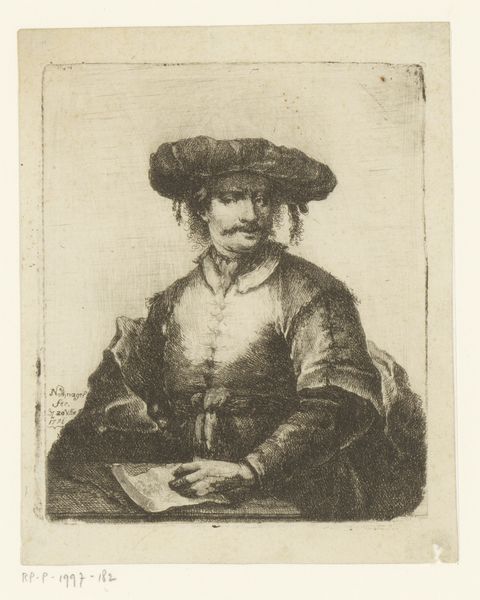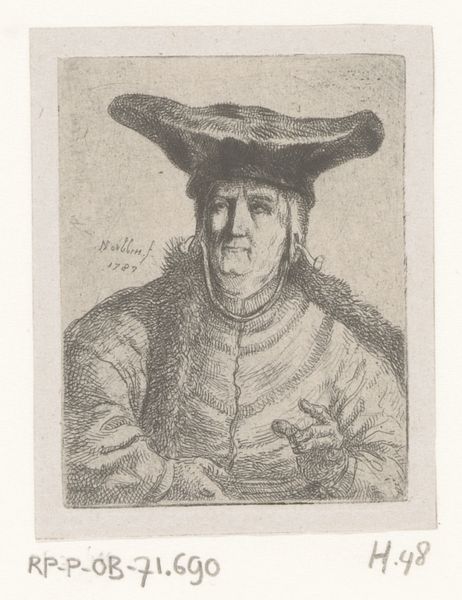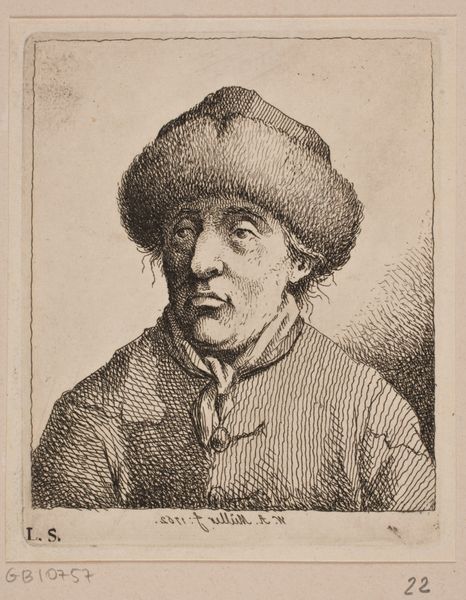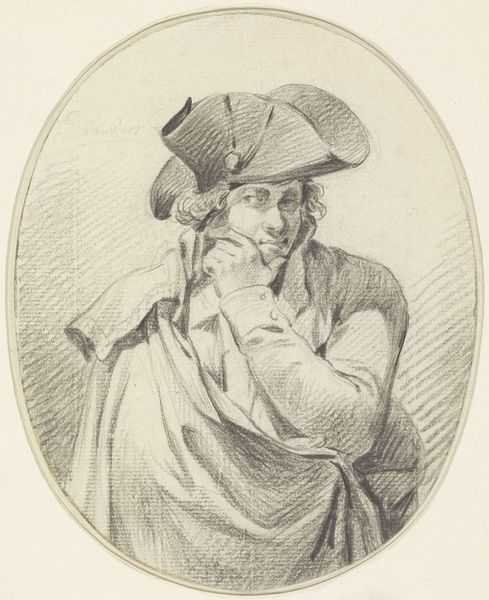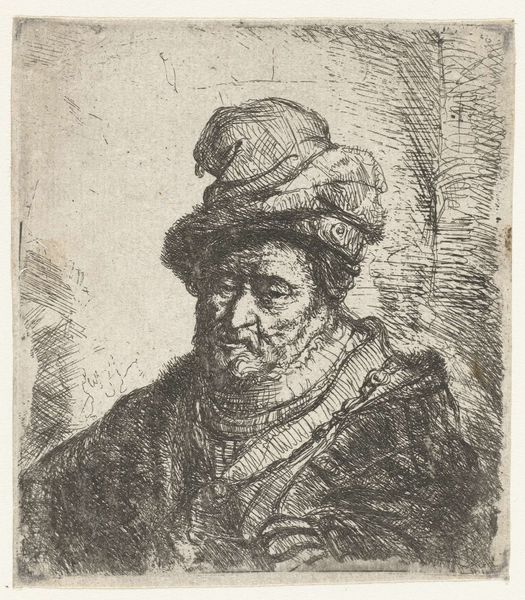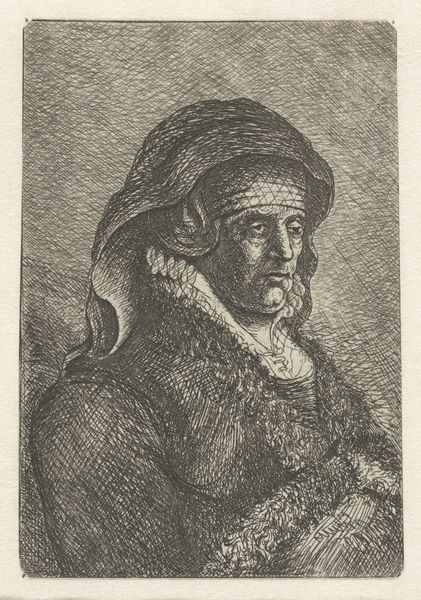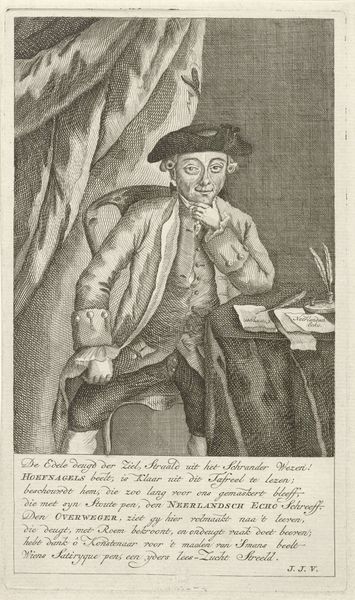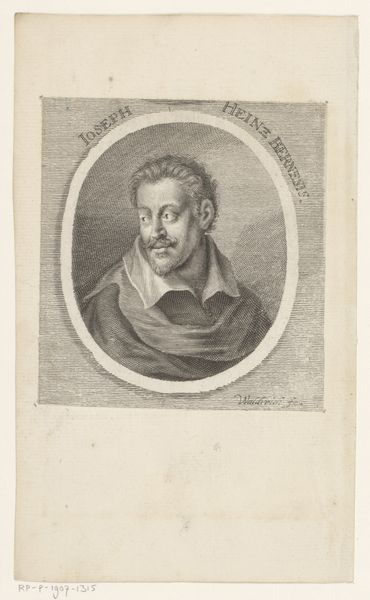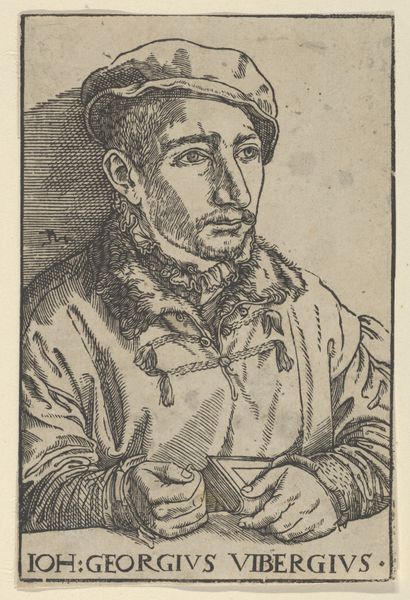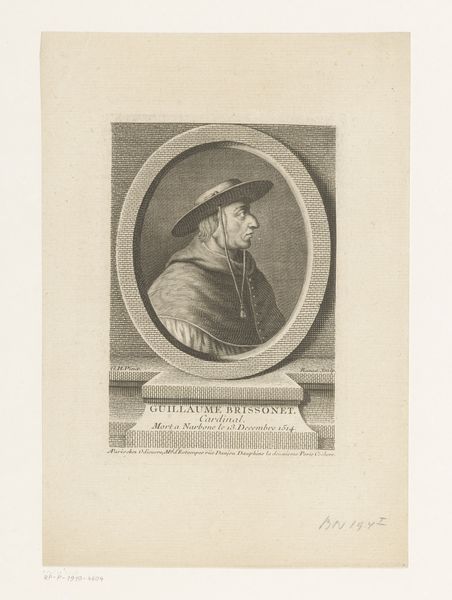
Dimensions: 135 mm (height) x 113 mm (width) (Plademål)
Curator: Immediately, the man's eyes strike me. There's a gravity in them, a weight that seems to pull the whole image downward, don’t you think? Editor: I agree. The somber expression contrasts starkly with the almost theatrical flourish of the hat. This print, "En mand med baret," or "A Man with a Beret," by Georg Mathias Fuchs, created in 1774, offers us a glimpse into 18th-century portraiture. The Baroque influences are still visible, particularly in the emphasis on ornamentation and drama. Curator: Ornamentation certainly plays a key role. I'm curious about that beret itself. The way it’s rendered almost seems like a halo. Is it possible that, on a symbolic level, it stands in for knowledge or elevated status? Editor: Potentially. Head coverings in this era often signaled status and profession. It also represents, to me, the power of adornment in the social and political theatre. In these portrait prints, class is always a central aspect. Curator: Absolutely, visual culture often serves as an essential signifier of a person's social standing. Also, thinking about the etching technique, you see the artist meticulously builds form through densely hatched lines to create these incredibly detailed textures. Editor: And look at how Fuchs manipulates light and shadow! The areas of intense darkness around the subject’s face seem to almost anticipate the dramatic contrasts we’ll see in the later Romantic period. It's quite impressive when considering its place within art historical movements. Curator: The way the man's gaze meets yours; it isn't passive. You are a party to this exchange. It reminds us of the very human need to leave an impression. We strive for our essence to persist beyond our time. Editor: Indeed. When considering a piece like this, we're confronted not only with aesthetics but also with how individuals navigated social constructs of their era. What does it mean, for instance, that the artist memorialized him this way and whose gaze benefits? These questions make it compelling. Curator: Exactly. Seeing "En mand med baret" reminds us how much symbols retain the ability to move across time and change meaning depending on where and how you see them. Editor: And situating it within a framework of power reveals that it's more than just art. It's evidence of the ongoing social forces influencing artistic expression.
Comments
No comments
Be the first to comment and join the conversation on the ultimate creative platform.

